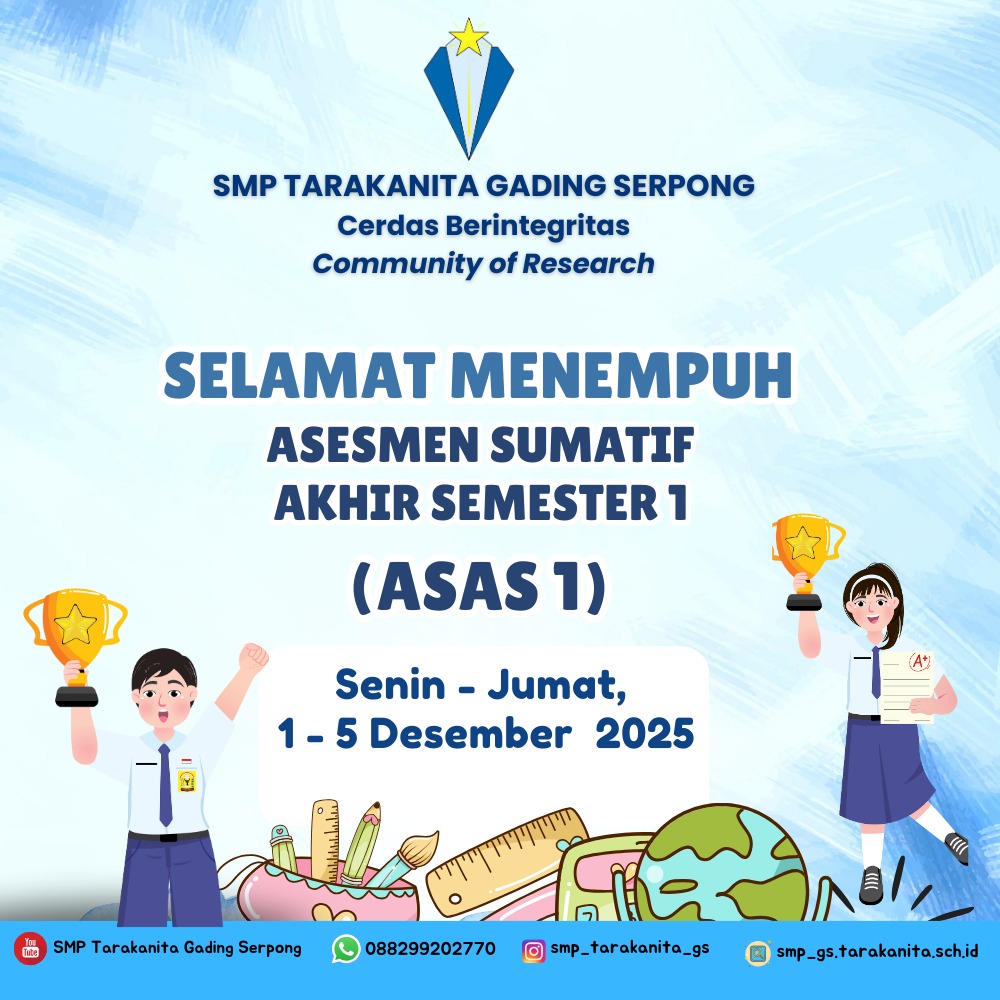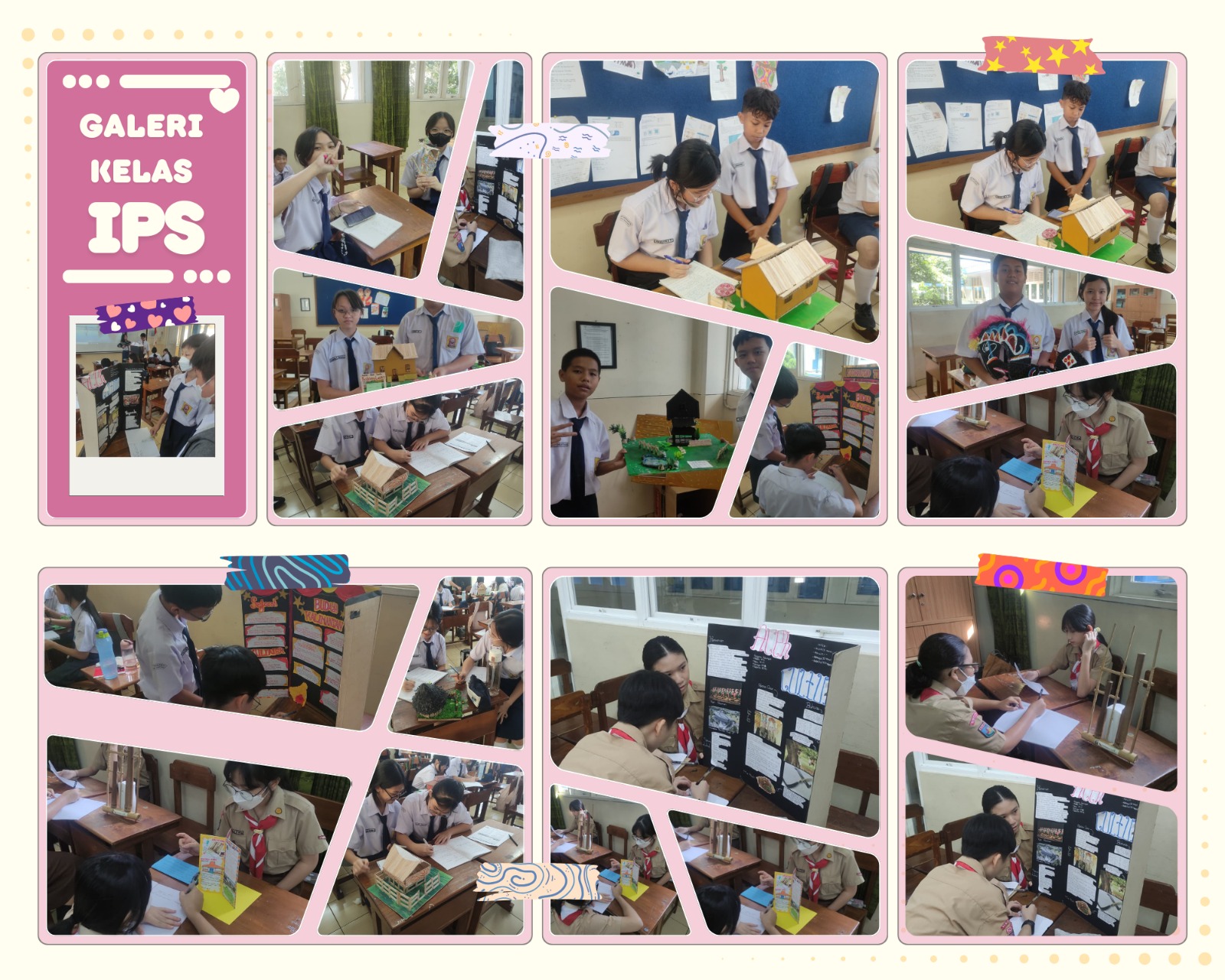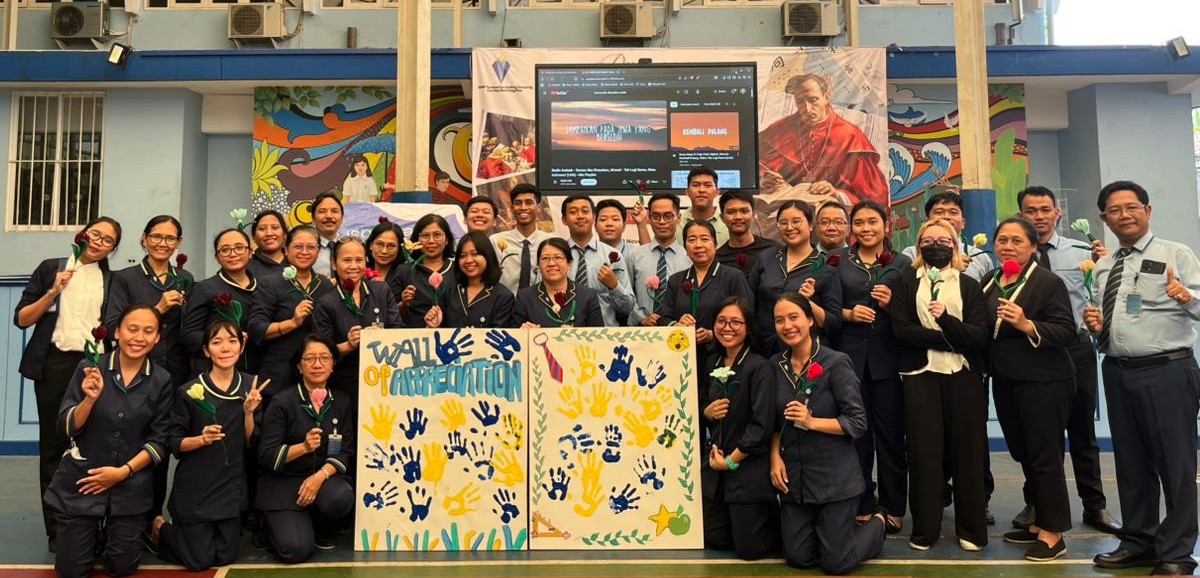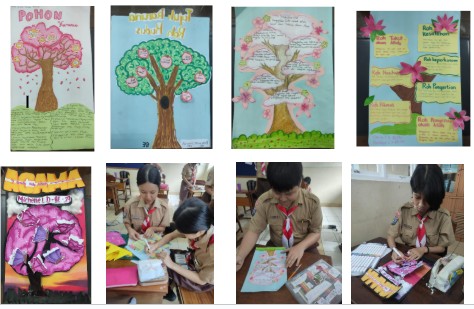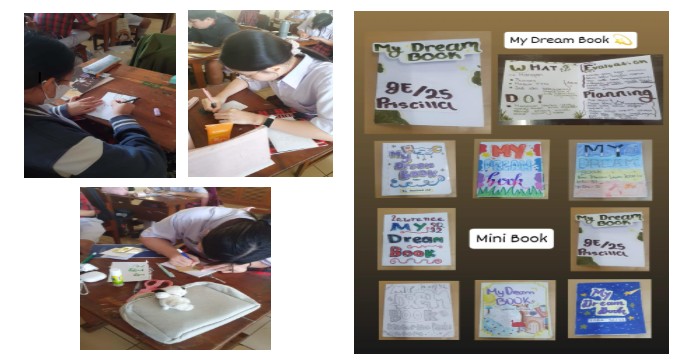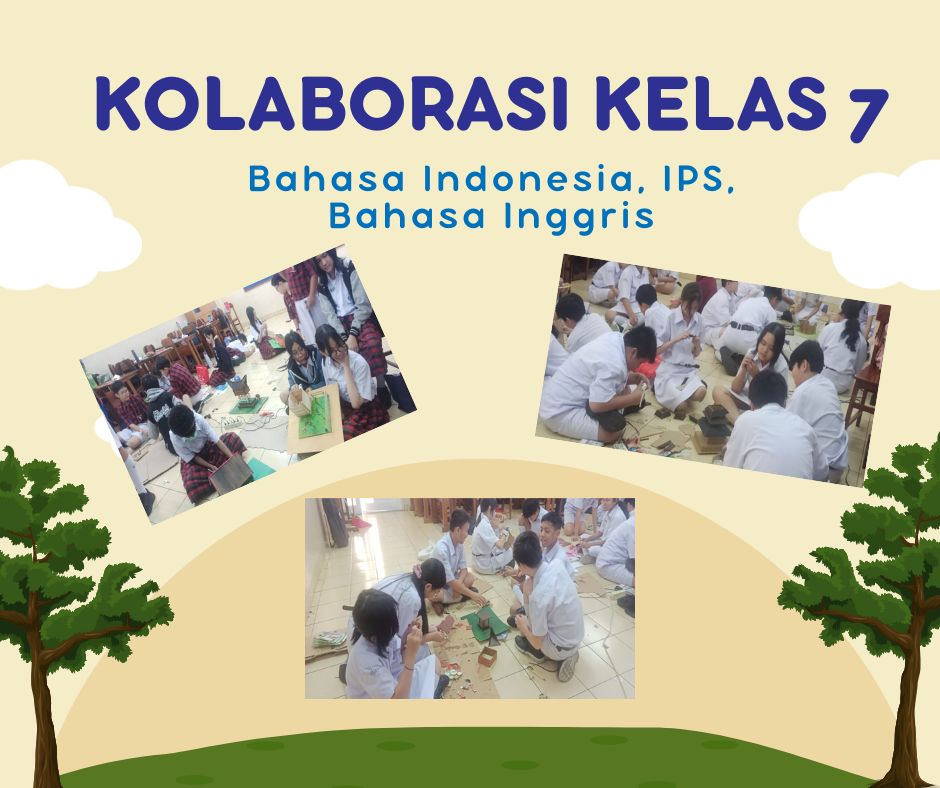Article Detail
The Impact of Anime on The Appreciation of Indonesian Culture in Teenagers at Tarakanita Gading Serpong Junior High School
The Impact of Anime on The Appreciation of Indonesian Culture in Teenagers at Tarakanita Gading Serpong Junior High School
Lomba Peneliti Belia Nasional 2021
Mutiara Abadi
Tarakanita Gading Serpong Junior High School
Introduction
Anime is the subject which popular in society as modern pop culture product, especially among teenagers. In this study, researchers interested on the impact of anime on the appreciation of Indonesian culture. The research focus of this research is on teenagares who tend to imitate the culture of figures in anime. Such as how to dress, how to talk and food preference. This anime loving sub-culture is called wibu. Wibu refers to someone who are really into anime and its styles. A wibu tends to collect anime merchandises, dresses like anime characters, or imitating anime styles.
The term anime refers to Japanese sub-culture animation art. Anime comes as story telling in modern style, in form of comic book and television serial. Anime can be printed, but also can be audio visual, nowadays even using interactive video games. Anime characters are visualized with colourful hairs and big round eyes (Ahmad, 2021), giving cute and fun environment to entire art style. These traits attract teenagers to anime and its cultural reference.
This research was conducted based on the observations of the researchers previously who found that many teenagers like anime and they tend to follow the culture of the anime they like. Based on these observations the researchers has the question how they appreciate and love our own culture more in the midst of other developing foreign cultures.
The teenagers in this study age range from 10 to 19 years old. In this research, the teenagers classified into early teenage (11 to 14 years old), middle teenage, middle teenage (14 to 17 years old), and late teenage (17 to 20 years old) (Wulandari, 2014). With concern to this classification, our group of teenagers will be early teenage. The research will be conducted on teenagers at Tarakanita Gading Serpong Junior High School.
Teenagers have special character, how to expressing their thoughts and expressions. In this study, reserachers has assumption that when they do have idols they raly on some values that they think idols have by imitating on their style. As it was found that they really enjoy each other company, making them not really appreciate the supervising eye from adults. They also tend to easily get inspired to role model and having idols (Krisnaningrum, 2017).
The presumptions are as follows: teenagers are not as developed as adults in many ways; and teenagers are easily influenced. Hence, the researcher’s friends’ imitation to anime style can be relate to their admiration toward anime. This imitation and admiration toward anime may be overwhelming beyond their admiration to their own culture Indonesian. This paper wants to examine this. The researcher would like to measure how much these admirations are, between to anime, and to their own culture, Indonesian.
To do this, the research will be using symbolic interaction theory ‘I and Me’ from George Herbert Mead. Inside a teenager mind, there is interpersonal conflict. The conflict is between the ‘Me’ and the ‘I’. ‘Me’ is impulse to act and behave following the society rule, according to the society ask to and its values. On the other side, ‘I’ is impulse to act and behave following his/ her own terms, live by their own values. Whenever a teenager is behaving according to society rules, when they are obedient, it means they are influenced by this ‘Me’. Whenever a teenager being creative, outspoken, even rebellious, it means they are expressing their ‘I’. (Krisnaningrum, 2017).
During their development, teenagers will enter the Generalized Other phase. This is when a teenager identified herself with her peer characterization. This group character somehow will dictate the teenager’s behaviour. So even in her own peer group, fellow teenagers, a teenager also bound to her ‘Me’. When she is not bound with her peer group values, she then expressing her ‘I’. (Iqbal, 2021).
These interpersonal characters are influencing the teenager’s mind as well as her conducts. The interaction between ‘Me’ and ‘I’ in one teenager’s mind might brings her to imitation. Imitation is important sociological aspect to preserve way of life. Within ‘Me’ influence, a teenager can be taught to imitate the group’s behaviour, the society’s values. Although, imitation can be dangerous when it comes from irresponsible sources. This is when ‘I’ should be the keeper so that one’s creativity can be the defending block. (Soekanto, 2019).
This study discusses culture as the main variable. Culture is defined as way of life owned and developed by a group of people and inherited through generations. Culture consists of political and religious system, norms and mores, languages, tools, architectures, and arts. (Reyvaldi, 2014).
The teenager’s shifting behaviour from anime exposure is related to the globalization. In this information era, it is easy for everyone to acquire information from all over the world. Teenagers are the carvers of everything technological. So, it is only making sense if teenagers become the first to shift their interest to another culture values. The situation is calling for a warning that we should fortify our grip into our own cultural values, Indonesian. (Khansa, 2021).
With all of the above in mind, the researcher is offering these research problems to be solved:
How does Japanese culture influence Indonesian teenager’s view toward their own culture, Indonesian?
How does anime influence teenager in regard of behaviour and cultural preference?
How does anime exposure affect teenager’s view toward Japanese culture?
This research aims to determine how much cultural preference how much cultural preference shifhts from Indonesia to Japan due to anime that occurs in teenagers. This study also aims to find out whether teenagers whos obsessed with anime and like the culture of Japan affect their love for Indonesia culture.
Research Methodology
This research uses a descriptive method, which describing systematically, factually, and accurate regarding particular population, attributes, characters, or specific factors. (Sunggono, 1997).
Descriptive research is intended to provide a description as accurate as possible about a person or a situation. In this study, knowledge about symptoms studied was quite a lot. So, in this case the researcher already has the right research problems and may be ready with a hypothesis. (Adi, 2021). This research is categorized as descriptive research because it wants to capture the phenomenon of wibu that occurs in 8th and 9th grade students of Tarakanita Gading Serpong Junior High School.
So, the research subjects are students from 8th and 9th grade of Tarakanita Gading Serpong Junior High School. In the first data collection, the researcher used the combined interview method that direct interview and indirect interview. This method is used because not everyone fond of anime so researchers have to to separate them from the general public with that’s method.
Interview is part of scientific method. It is an important procedure to acquired scientific knowledge. (Sunggono, 1997). Interview is one method of collecting data by way of communication, namely through contact or personal relationship between data collectors (interviewers) and data sources (respondents). This communication can be done directly or indirectly. Indirectly using a list of questions sent to the respondents, then after the respondents fill their answers on the list, it will be sent back to the interviewers. Directly, interviews are conducted in a ‘face to face’ manner, meaning that the researcher/ interviewer will be dealing directly with the respondents to ask verbally what she wanted to know. The answers will be captured by the interviewers. (Adi, 2021).
To determine the subject of study, the researcher distributes questionnaire to students of Tarakanita Gading Serpong Junior High School, grade 8th and 9th used Google Form. The first of requirements :
Age range 11 to 14 years old
People who loved anime
Know at least three anime titles.
Spend time watching or reading anime 4 hours in 1 week.
The requirements are cumulative, so that respondents who fulfil the requirement will be interviewed by researchers with more in-depth question. Based on these criteria shows that the subject has a high obsession with anime. Beside that these requirements can describe their knowledge of anime by being able to mention at least three anime titles and actively search about anime. Point number four is about time spent to watch or enjoy anime. Many teenagers only have free time during weekend, that is around 8 to 12 hours of time. Presumably, these times are precious spare free time for a teenager to use. If 4 hours or more of that spare free time are used for anime, then it is safe to say the particular subject is anime lover.
Then after the researcher has get the fix research object in accordance with these provisions, the researcher then conducted direct interviews with them as source person. This interview aims to find out the extent of the subjects preference for anime through information related to food, songs, and arts from anime that they like. In addition, to find out how the imitation expresiion of the research subjects after being exposed to anime through their reactions about how to said thank you, how to hang up called, how to pose and selfie.
The data obtained to provide a broad picture related to a situation (Nugraha, 2020). Based on the mainly of the data obtained, analysis is divided into quantitative and qualitative analysis. Quantitative analysis is carried out on data that can’t be counted, is monographic in nature or in the form of cases (so that it cannot be compiled into classification structure); the object of research is studied in its entirety and as long as it is about humans, it concerns the history of human life. (Adi, 2021)
From the way researcher obtaining the data, it is divided into primary and secondary data. While primary data is data collected directly by researcher, through observation or interview, secondary data is obtained indirectly from other’s research or observation. (Adi, 2021).
This study uses qualitative data using primary data obtained based on direct information.
Result and Analysis
Based on interviews conducted to students of Tarakanita Gading Serpong Junior High School grades 8th and 9th, the researcher got results as follow. The first part of the interview is to separate the subject from the whole population. The first interview was an indirect interview conducted using questionnaire from Google Form. This first questionnaire’s questions are as follow.
How old are you? (Subjects should be aged 11 to 14 years old.)
Do you like anime? (If the respondent answers no then the questionnaire ends, if the respondent answers yes then it will continue to the next question.)
What anime do you like? (Researcher is expecting to get 3 or more anime title. Less than that then respondent will not become subject.)
How much time is spent on anime? (Researcher is expecting 4 hours a week or more, less than that then respondent will not become subject.)
The results are as follow.
Table 1. First Questionnaire
According to Table 1 above, there are 25 students who like anime while those who meet the criteria to become subjects are only 19 of them (can mention more than 3 anime titles and spend more than 4 hours a week on anime).
In the next step, the researcher asked several questions with the aim of knowing the impact of liking anime with the appreciation of Indonesian culture. The first series of questions posed by the researcher describes the tastes and behaviour (imitation) of the respondents. The questions asked are as follows:
Since when do you like anime?
Where did you know anime for the first time?
What do you think anime is?
Do you like Japanese culture? If so, what are they?
Would you like to live in Japan? Why so?
Do you like Indonesian culture? If so, what are they?
The researcher hopes respondents answered honestly. At this point, the open questions might be answered to appeal the safe feeling for the researcher, or even for the respondents themselves. For example, it is safer to say that they like Indonesian culture better, because there is no real comparison. The answers in this series of questions might only expressing the respondents ‘Me’. As a part of Indonesian people, the respondents might feel bound to appreciate their own culture, Indonesian.
To ensure and really measure the influence of ‘Me’ and ‘I’, the researcher was conducting follow up questions in the interview. The second set of questions is in the form of selectable pictures. The respondents were asked to choose which one they prefer. Each number consisted of two choices of pictures. They can, however, choose both as they like both options. The options are about food taste, arts, and songs.
The options are as follows.
Mi ayam or Ramen
Onde-onde or Dango
Lemper or Sushi
Batik or Hanafuda
Wayang or Bunraku
Kebaya or Kimono
Lagu Meraih Bintang or Renai Circulation
Lagu Ampar-ampar Pisang or Tooryanse
The options are designed to be comparable. On the food taste, each comparison is much alike, whether in main ingredients or in taste. On arts, each comparison also comparable, whether in their media, style of paintings, or functions. On the song comparison, the songs are selected as comparable. The options were presented as pictures and information below the pictures to help subject understand the food or art meant.
Number 7 are both modern song with fast upbeat tempo and fun atmosphere, while number 8 are both traditional songs designed to be enjoyed by children. For the song comparison, the researcher played the song through one on one zoom meeting for the subject to listen and choose.
Next part of the interview is to find out how much anime influence the subjects’ behaviour. These behaviours are limited to imitation behaviour. The questions are as follows.
How do you thank your elders and friends?
How do you call people close to you?
How do you pose selfies?
Based on the questions given to the subjects, it was found that the subjects who liked anime had liked anime since they were in elementary school and since the beginning of the pandemic. Of the 19 subjects, they said they knew anime from social media, friends, and/ or older siblings.
The subjects said that anime is currently a form of entertainment to relieve fatigue and tiredness during hard day when there are many tasks at school. Associated with Japanese culture, from 19 subjects, it was found that the subjects who liked anime do not like Japanese culture beyond anime. They do not hate it, but just not into Japanese culture beyond anime. Some subjects point that Japanese culture might too strict for them.
Some subjects, however, because of anime, they grew fond to Japanese culture beyond anime. They would love to live in Japan. They think that Japan is advanced in technology, it is clean and maintain high disciplines. These traits of Japan seems as the appealing factors for the subjects to lean into Japanese culture.
Regardless of the liking of anime, the subjects are still leaning to Indonesian culture. They love Indonesian culture for its varieties and richness. They said the food are tasty, the dancing and traditional clothing are colourful and beautiful, and the people are humble and warm.
For the second set of question, subjects examined for their preference in food, arts, and songs. The results can be seen from the following table.
Table 2. Second Questionnaire
Second questionnaire is to find out the subjects’ cultural preference. The subjects may choose both options if they like them both. The design is perpetually allowing them to choose both options so they can express both ‘Me’ and ‘I’. The assumption is when they know they have the option to choose both options, yet still choose only one, it means they really love that chosen option a lot, leaning to their ‘I’, or ‘Me’ respectfully. But if they choose both options, it means the ‘Me’ and ‘I’ in their mind are working together, creating mindset of cultural bound person yet still able to be creative.
From the Table 2, the researcher found out that overall, Indonesian culture prevails. Even in the preference of teenage anime lover, among them, Indonesian culture still have its supporter. Of course, there are some higher preferences in sushi and ramen. This preference may be related to the availability of modern restaurants, making sushi and ramen as expensive and bon a fide treat.
There is also higher preference toward kimono against kebaya. This finding is a warning for us Indonesian. As a teenagers are easily absorbing any acceptable exposure, whether in songs or any form of sub-culture creations. The exposure of kebaya is very low in this modern era. While many Indians are still wearing Sharie and Japanese in anime are kimonos, teenagers do not see any kebaya around. So, this preference may be related to lack of kebaya exposure for the teenagers, and may as well be a warning alarm for us to promote kebaya more, or any traditional clothing.
Wayang and Batik are probably the most famous art creations in Indonesia. As anime lover, some the subjects have not even hear of the hanafuda or bunraku. They both are traditional art in Japan, and even appear in some anime, though not as extensive as kimono or dango. This finding also important telling us that steady exposure.
Now, for the third set of questions, about the subjects’ behaviour.
Imitation is imitating behavior, in this case anime. The third series of questions produces answers regarding anime imitation. Regarding how to thank and address people, respondents were less influenced by anime culture. Of the 19 respondents, only 2 people said “Arigato” to thank them. Of the 19 respondents, only 2 people used Japanese terms to call their close people, and only to call their closest friends. The way to call him is by adding the word "kun" for boys and "chan" for girls after the name being called.
In taking selfies, most of the respondents raised two fingers indicating the number 2 beside their face. This photo pose is actually found in many photos, be it friends, relatives, or other people. This pose is actually popular in anime culture, although it was originally an expression of peace from America in the 1970s.
The results of the research that the researchers got were that several research friends who were in grades 8 and 9 of Tarakanita Gading Serpong Junior High School imitated the behavior of anime originating from Japanese culture, and even liked other Japanese cultures. They can imitate this behavior due to exposure to anime. The impact of this anime is obtained when watching anime series, reading comics, playing games, and interacting with friends.
Based on the data collected above, it is safe to say that the subjects do not experience any negative impacts from anime influence. This is most likely because they use anime merely as entertainment and to fill spare time. They enjoy anime, and they may imitate anime styles, but that is all about it. Anime surely affects their preference in some extend, especially on drawing style. The big round eyes and colourful hairs are common style to draw characters nowadays.
Based on theory George Herbert Mead, it was found that the subject become ‘I’ when she enjoys anime and Japanese culture. Also, she become ‘Me’ when respecting Indonesian culture. Teenagers’ minds are in the process of being formed, so as their preferences, behaviours, even identities. Parents, school, and the community are their environment, their important forming factors, hence are responsible to it. So, this next generation of young people become a shared responsibility. This burden will be felt more in this information era, when foreign cultures are easily accessible, by everyone.
Conclusion
The researcher came up with these conclusions.
Teenagers who enjoy anime and into Japanese culture are evidently still respecting their own culture, Indonesian.
When exposed to anime, teenagers’ preference of culture and behaviour may be affected by anime style and Japanese sub-culture.
Teenagers can grow fond to Japanese culture through anime exposure.
Future Work
It is known that exposure to certain culture with proper packaging like anime can easily modify or affect teenagers’ preference. If we think that is important to maintain and uphold the preference to our own culture, this finding may just tell us how to do that.
Parents, school, government, or any stakeholders and shareholders should promote local heritance and or national culture using creative ways. Movies, comics, even video games should be used as alternative media, among other conservative media.
References
Adi, Riyanto. 2021. Metodologi Penelitian Sosial dan Hukum. Edisi revisi. Jakata: Yayasan Pustaka Obor Indonesia.
Ahmad. 2021. “Mengenal Berbagai Macam Genre Anime”, https://www.gramedia.com/best-seller/genre-anime/amp/ , diakses pada 26 Agustus 2021 pukul 13.52.
Iqbal, Rizky Muhammad. 2020. “Mengenal Konsep diri dari George Herbert Mead”, Mengenal Konsep Diri dari George Herbert Mead Halaman 2 - Kompasiana.com, diakses pada 3 September 2021 pukul 16.49.
Khansa, Tasya Alifah. 2021. “Keragaman Budaya Indonesia”, https://storymaps.arcgis.com/stories/3034469ec5a64f0e8a3541a1e8a5b6d7, diakses pada 26 Agustus 2021 pukul 19.24.
Krisnaningrum, Iva, Masrukhi dan Hamdan Tri Atmaja. 2017. Perilaku Sosial Remaja Era Globalisasi di SMK Muhammadiyah Kramat, Kabupaten Tegal. Journal of Educational Social Studies. 6(3): 92-98
Nugraha, Jevi. 2020. “Pengertian Data Beserta Fungsi, Jenis, dan Contohnya yang Perlu Diketahui”, https://m.merdeka.com/jateng/pengertian-data-beserta-jenis-fungsi-dan-contohnya-yang-perlu-diketahui-kln.html, diakses pada 3 September 2021 pukul 18.07.
Reyvaldi, Mohammad. 2014. Aspek Ilmu Sosial dan Budaya Dasar.Tugas Ilmu Sosial dan Budaya Dasar Program Studi Agribisnis Fakultas Pertanian Universitas Tadulako Palu.
Soekanto, Soejorno. 2019. Sosiologi Suatu Pengantar. Edisi Revisi. Jakarta: PT Raja Grafindo Persada.
Sunggono, Bambang. 1997. Metodologi Penelitian Hukum. Jakarta: PT Raja Grafindo Persada.
Wulandari, Ade. 2014. Karateristik Pertumbuhan Perkembangan Remaja dan Implikasinya Terhadap Masalah Kesehatan dan Keperawatannya. Jurnal Keperawatan Anak. 2(1): 39-43.
-
there are no comments yet

